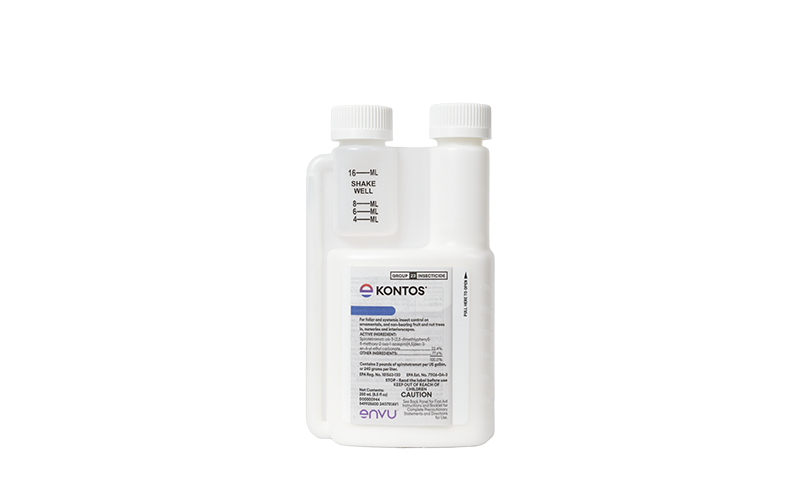The Problem
Thrips are among the most common and difficult insect pests to manage in commercial ornamental production. Thrips are tiny, ranging from 1/16 to 1/8 inch long and vary in color from yellow to brown to black. Both adults and larval stages feed on plant tissue with rasping-sucking mouthparts. Most thrips feed on leaf tissue but some species can damage young flower buds causing them not to open or be deformed. In addition to this direct damage, thrips are capable of transmitting plant viruses making thrips management critical in commercial production settings.
What To Look For
The thrips life cycle includes an egg stage, two mobile feeding larval instars, two pupal stages and an adult stage. Adult greenhouse thrips are dark brown to black with a silver sheen and yellow legs. Often small brownish black specks of excrement can be seen on the leaves. Thrips feeding damage causes discoloration of the leaf tissue to appear bronzed to bleached between the lateral veins.
Thrips-infested flower buds often fail to develop or the flowers are deformed. Damaged flowers often have streaks of necrotic or discolored tissue. Adult thrips are frequently found in shaded areas of the plants and are most prevalent in spring when populations are reported to reach their peak. They damage both foliage and flowers of numerous ornamental plants. Greenhouse thrips are most problematic on annual bedding plants including begonia, chrysanthemum, dahlia, nasturtium and phlox.
The type of thrips and the host where they occur depends on geographic location, but the most economically important thrips include greenhouse, flower, gladiolus, red-banded, Cuban-laurel and chili thrips.
The Solution
Frequent inspection of plant material is essential to prevent rapid buildup of thrips in nurseries and greenhouses. This includes thorough inspection of new plant material prior to moving them into production areas. The use of hot pink, yellow or blue sticky cards can be useful for trapping and monitoring thrips populations. These should be placed 1 to 2 inches above the crop canopy at one or two cards per 1,000 square feet. Sanitation is an important tactic to remove all possible sources of thrips. Many weeds are susceptible hosts for thrips and should be removed or controlled with herbicides. Remove and dispose of old stock plants. Infested plant hosts and plant debris also serve as reservoirs for thrips. The use of biological controls (live predators) can be very effective, but limits the choice of chemical insecticides and should be practiced with this consideration. Altus® and Kontos® can be used on all stages of crop development for effective control of thrips. Preventative insecticide applications are recommended and be sure to refer to product labels for directions.
| Solution sheet - Thrips |



